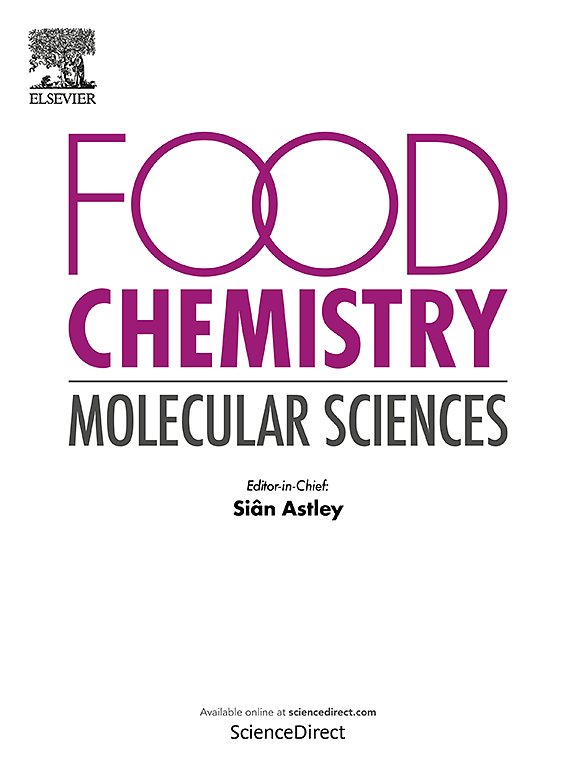meta-QTL分析揭示玉米多基因营养性状的遗传结构
IF 4.1
Q2 FOOD SCIENCE & TECHNOLOGY
引用次数: 0
摘要
玉米作为一种主粮作物,对全球营养安全作出了重大贡献。然而,由于籽粒锌(GZn)、籽粒铁(GFe)、籽粒油(KO)、蛋白质品质(PQ)和含量(PC)等性状的复杂性和多基因性,提高籽粒锌(GZn)、籽粒铁(GFe)、籽粒油(KO)、籽粒蛋白质品质(PQ)和含量(PC)的难度较大。在传统的数量性状位点(QTL)定位中,不同种群在不同环境下的测试结果具有异质性,这凸显了QTL不稳定性的挑战。因此,我们测试了Meta-QTL (MQTL)分析是否能够鉴定出具有更广泛等位基因覆盖范围和更高定位分辨率的稳定qtl,从而有效地进行复杂性状的标记辅助选择(MAS)。通过全面的文献检索,我们发现了29个定位研究,其中包含308个目标性状的qtl。共鉴定出34个稳定的mqtl,平均CI为4.59 cM。这些mqtl均位于10条玉米染色体上,表型变异解释率(PVE %)在7.3% (mqtl12) ~ 49.0% (mqtl32)之间。此外,分析还揭示了6个mas友好的mqtl和5个热点mqtl。此外,在这些mqtl中鉴定出591个基因序列,其中14个已知与玉米籽粒灌浆、金属稳态和脂肪酸生物合成有关。计算机分析证实了这14个cg的组织特异性表达。MQTL分析有效地细化了与营养品质相关的基因组区域(4.86倍),并鉴定出稳定的MQTL和CGs。这些发现将有助于通过MAS和基因工程开发营养丰富的品种。本文章由计算机程序翻译,如有差异,请以英文原文为准。
Dissecting the genetic architecture of polygenic nutritional traits in maize through meta-QTL analysis
Maize, as a staple crop, contributes significantly to global nutritional security. However, improving its nutritional quality, including grain zinc (GZn), grain iron (GFe), kernel oil (KO), protein quality (PQ), and content (PC), is difficult due to the complex and polygenic nature of these traits. In traditional quantitative trait loci (QTLs) mapping, different populations tested across variable environments have resulted in heterogeneous findings, highlighting the challenge of QTL instability. Therefore, we tested whether Meta-QTL (MQTL) analysis enables the identification of stable QTLs with broader allelic coverage and higher mapping resolution for effective marker-assisted selection (MAS) of complex traits. A comprehensive literature search revealed 29 mapping studies encompassing 308 QTLs for the targeted traits. A total of 34 stable MQTLs were identified, with an average CI of 4.59 cM. These MQTLs were located on all ten maize chromosomes, with phenotypic variance explained (PVE %) ranging from 7.3 % (MQTL1_2) to 49.0 % (MQTL3_2). Furthermore, the analysis revealed six MAS-friendly and five hotspot MQTLs. Besides, 591 CGs were identified underlying these MQTLs, of which 14 have known roles in grain filling, metal homeostasis, and fatty acid biosynthesis in maize. In silico analysis confirmed the tissue-specific expression of these 14 CGs. MQTL analysis effectively refined the genomic regions (4.86 folds) linked with nutritional quality and identified stable MQTLs and CGs. These findings will be useful for developing nutritionally enriched varieties through MAS and genetic engineering.
求助全文
通过发布文献求助,成功后即可免费获取论文全文。
去求助
来源期刊

Food Chemistry Molecular Sciences
Agricultural and Biological Sciences-Food Science
CiteScore
6.00
自引率
0.00%
发文量
83
审稿时长
82 days
期刊介绍:
Food Chemistry: Molecular Sciences is one of three companion journals to the highly respected Food Chemistry.
Food Chemistry: Molecular Sciences is an open access journal publishing research advancing the theory and practice of molecular sciences of foods.
The types of articles considered are original research articles, analytical methods, comprehensive reviews and commentaries.
Topics include:
Molecular sciences relating to major and minor components of food (nutrients and bioactives) and their physiological, sensory, flavour, and microbiological aspects; data must be sufficient to demonstrate relevance to foods and as consumed by humans
Changes in molecular composition or structure in foods occurring or induced during growth, distribution and processing (industrial or domestic) or as a result of human metabolism
Quality, safety, authenticity and traceability of foods and packaging materials
Valorisation of food waste arising from processing and exploitation of by-products
Molecular sciences of additives, contaminants including agro-chemicals, together with their metabolism, food fate and benefit: risk to human health
Novel analytical and computational (bioinformatics) methods related to foods as consumed, nutrients and bioactives, sensory, metabolic fate, and origins of foods. Articles must be concerned with new or novel methods or novel uses and must be applied to real-world samples to demonstrate robustness. Those dealing with significant improvements to existing methods or foods and commodities from different regions, and re-use of existing data will be considered, provided authors can establish sufficient originality.
 求助内容:
求助内容: 应助结果提醒方式:
应助结果提醒方式:


